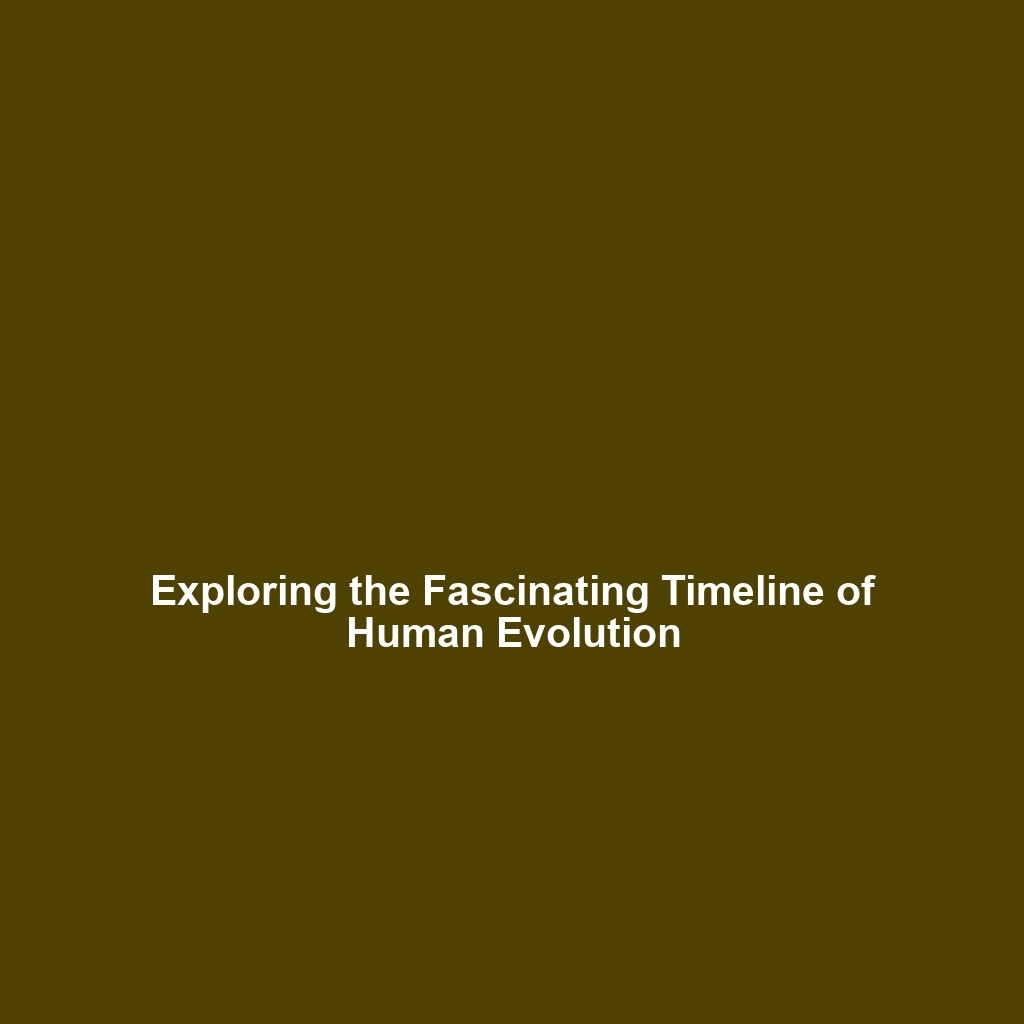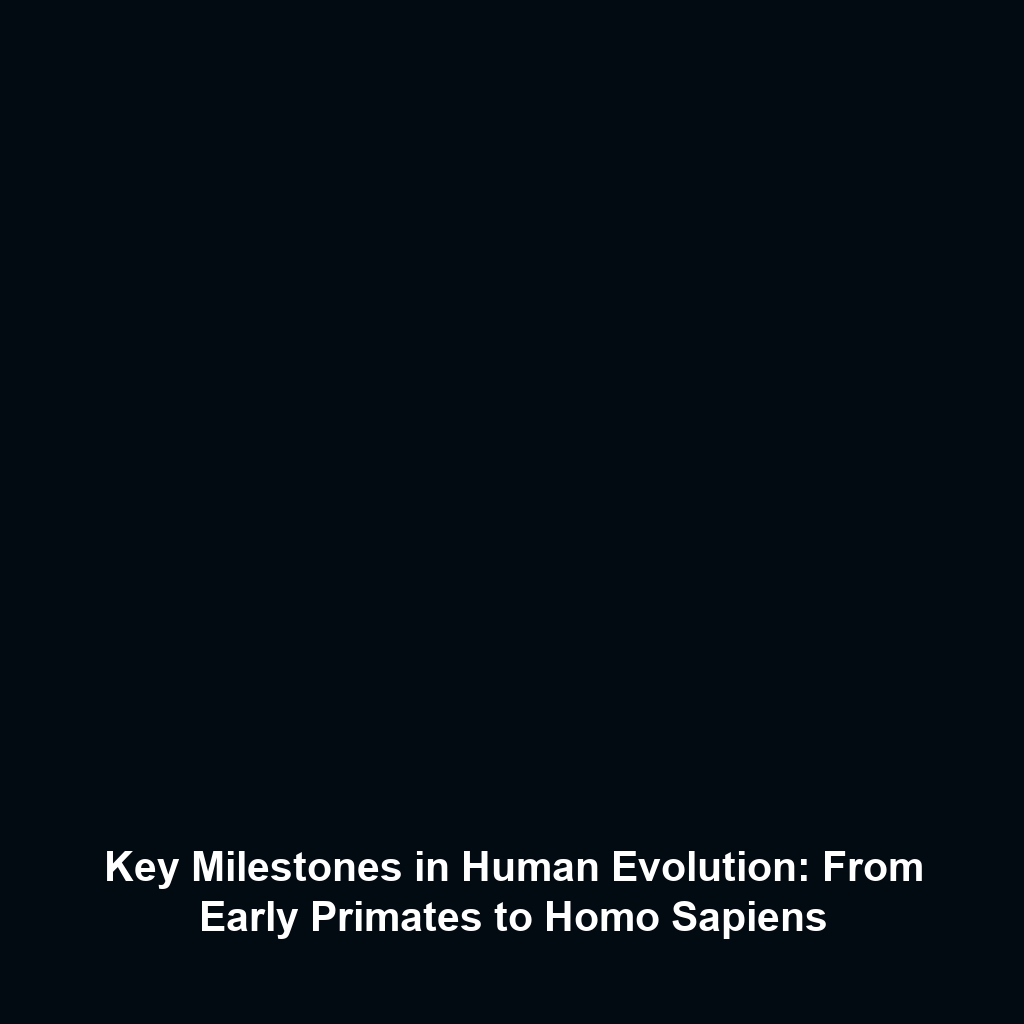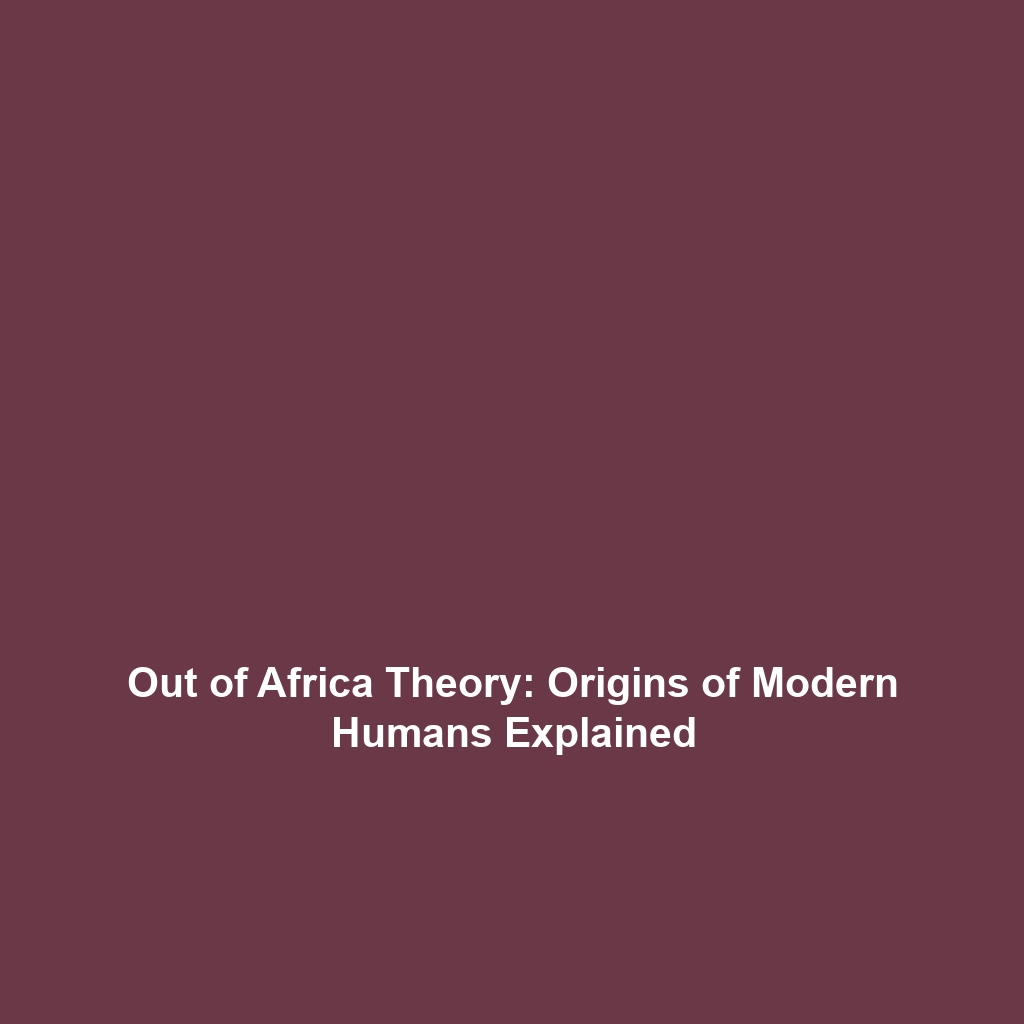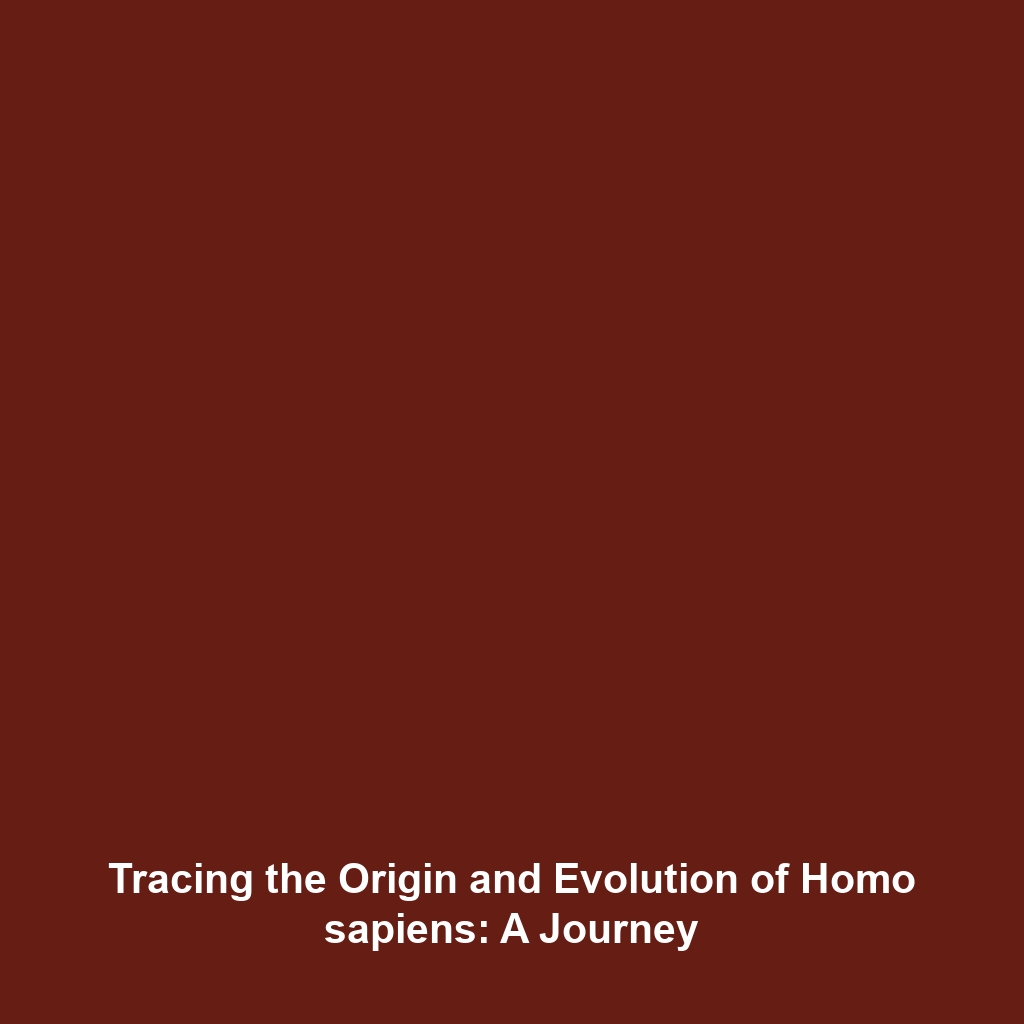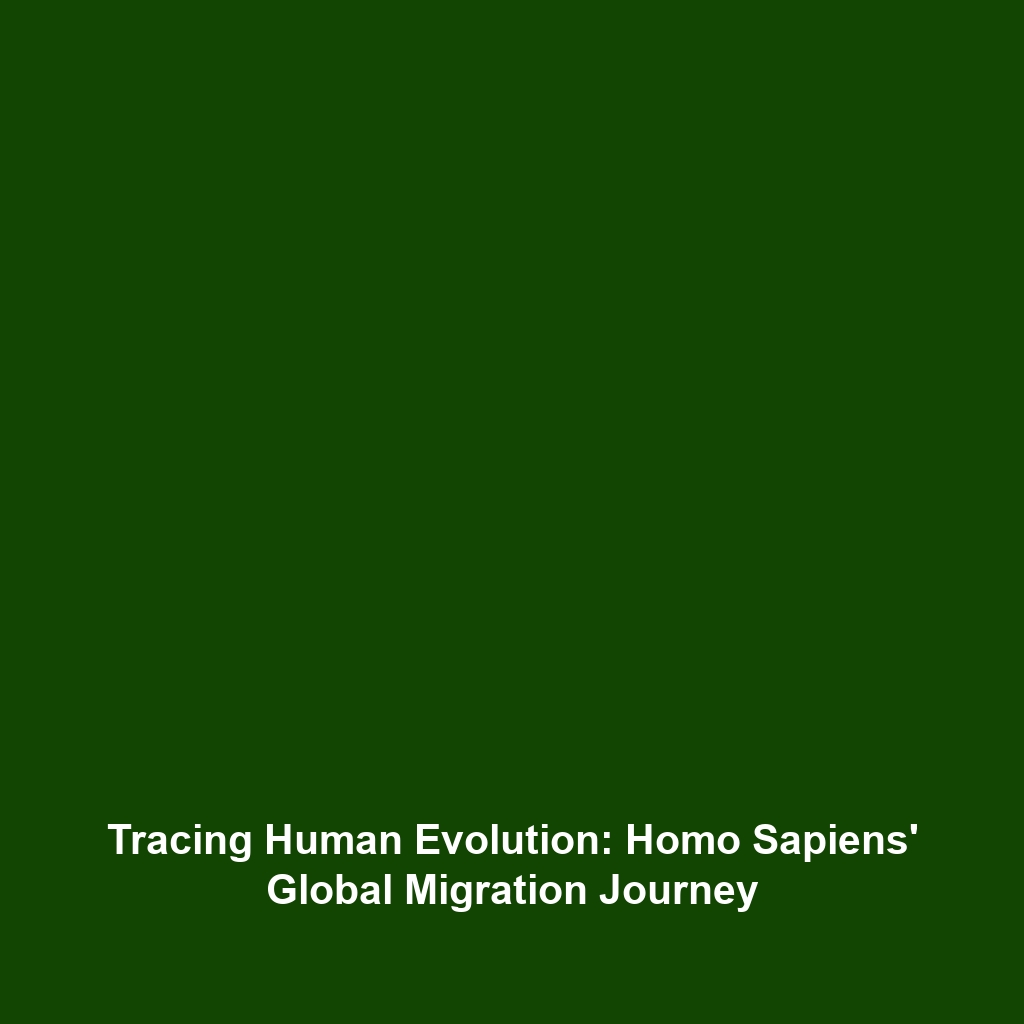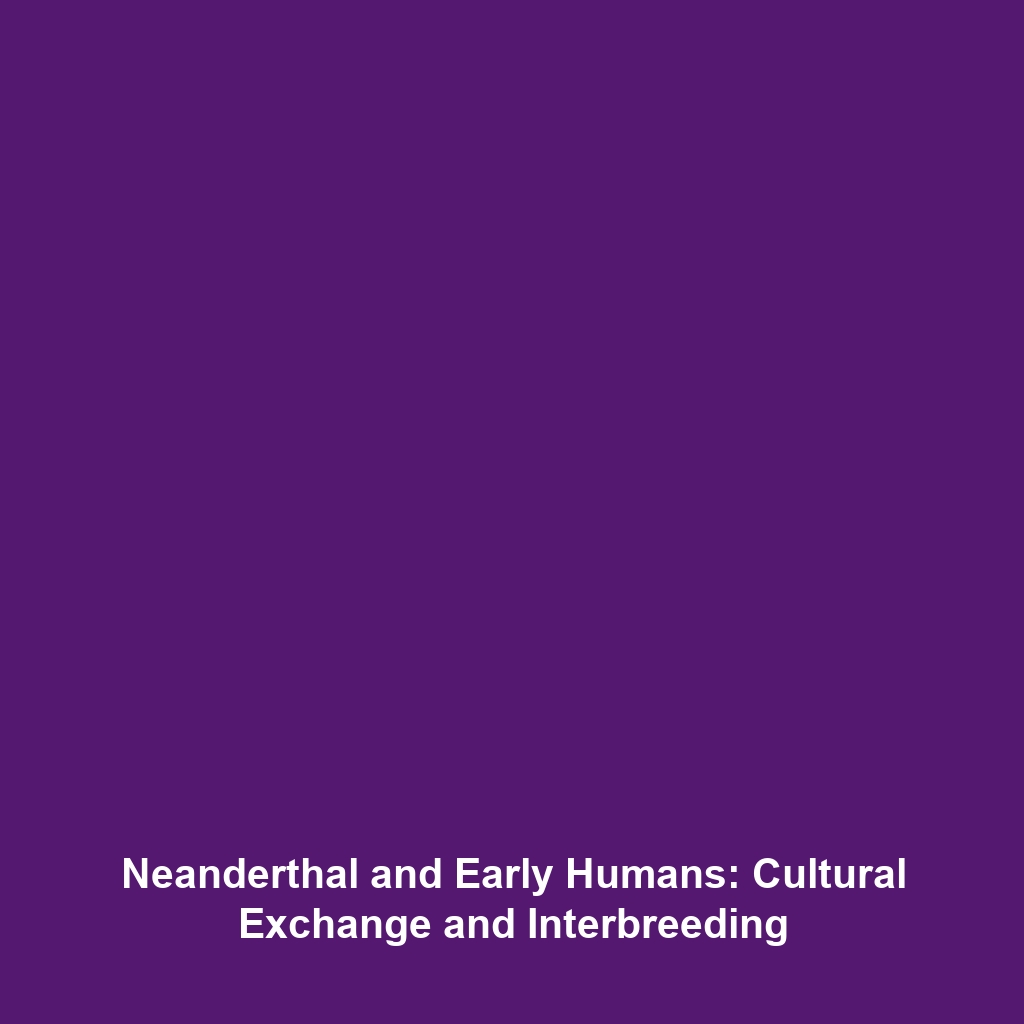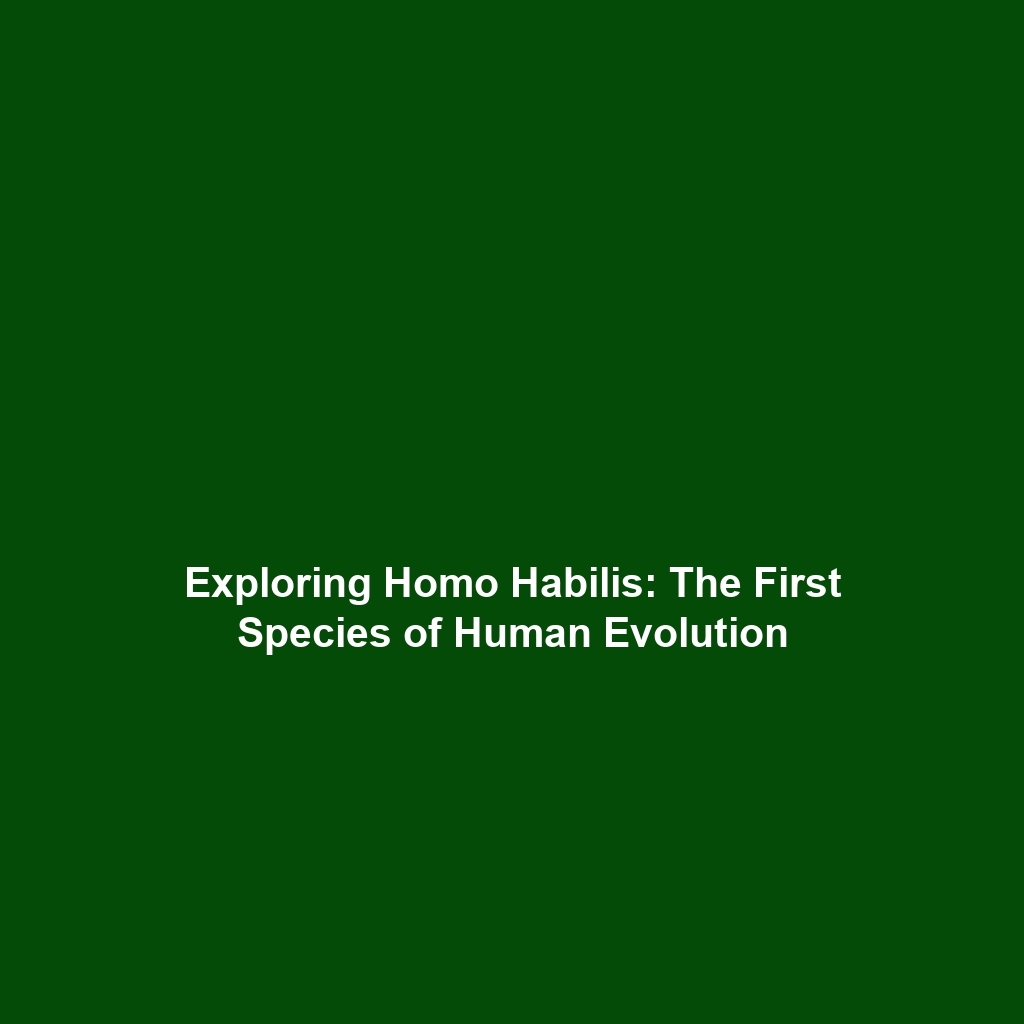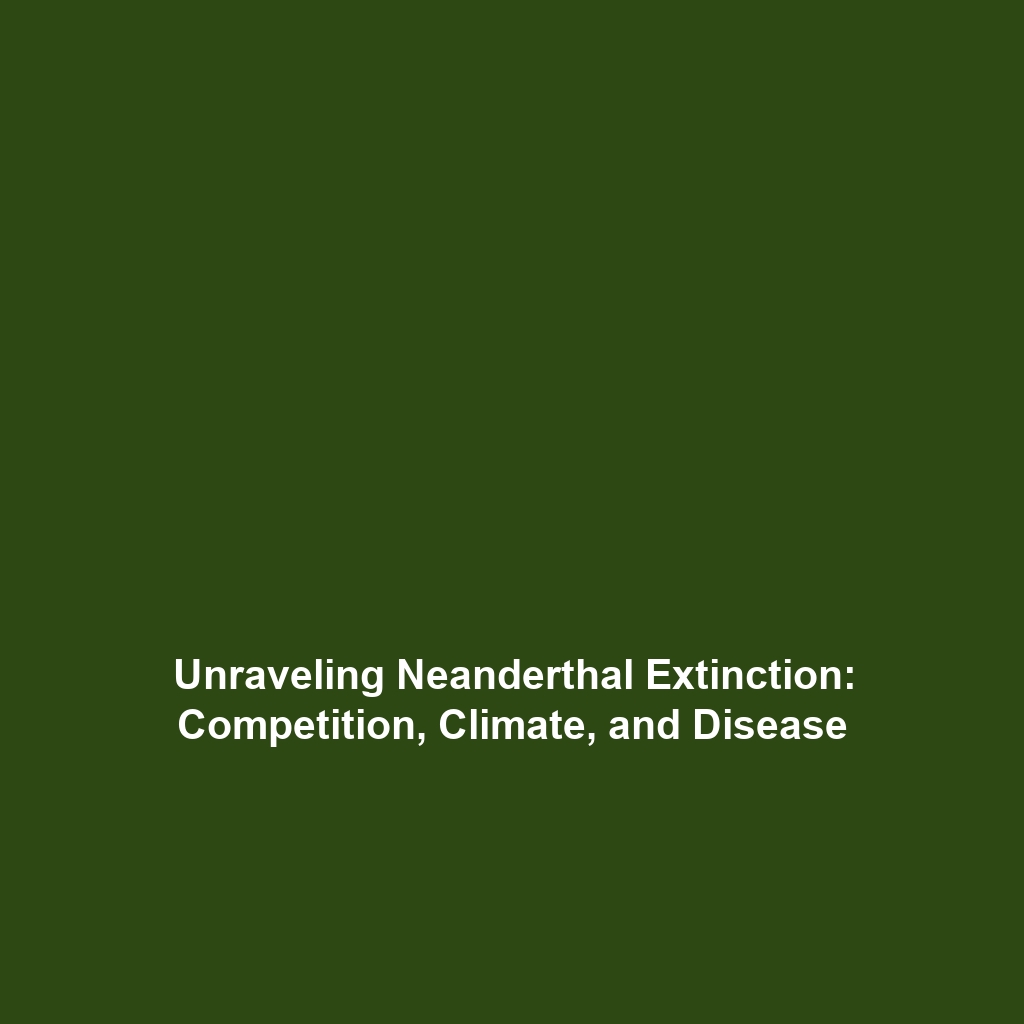Timeline of Human Evolution
Introduction
The Timeline of Human Evolution serves as a crucial framework for understanding the complex journey of humanity’s development from our primate ancestors to modern Homo sapiens. This timeline not only chronicles the significant milestones in human evolution—including the advent of bipedalism and the use of tools—but also provides insights into how these changes have shaped our behaviors, social structures, and adaptability to diverse environments. By examining this timeline, we can better appreciate our place in the natural world and the evolutionary processes that have led to our current biological and cultural diversity.
Key Concepts
Major Milestones in Human Evolution
The study of the Timeline of Human Evolution includes several major milestones that define our evolutionary path:
- Sahelanthropus tchadensis (~7 million years ago) – Considered one of the oldest known species in the human lineage.
- Australopithecus afarensis (~3.9 to 2.9 million years ago) – Illustrated bipedalism, representing a critical adaptation.
- Homo habilis (~2.4 to 1.4 million years ago) – The first known maker of tools, showcasing cognitive advancements.
- Homo erectus (~1.9 million years ago to as recently as 110,000 years ago) – Demonstrated increased brain size and endurance through bipedalism.
- Neanderthals (400,000 to 40,000 years ago) – Provided evidence of cultural practices and burial rituals.
- Homo sapiens (~300,000 years ago to present) – Represents the culmination of evolutionary processes and the emergence of complex societies.
Applications and Real-World Uses
Understanding the Timeline of Human Evolution is instrumental in various fields:
- Anthropology: Provides context for human-environment interactions across eras.
- Medicine: Insights into genetic disorders derived from evolutionary history can guide modern healthcare.
- Education: Facilitates curriculum development around human origins and evolutionary theory.
These applications demonstrate how the Timeline of Human Evolution is used in Human Evolution, bridging academic inquiry and practical knowledge.
Current Challenges
While significant progress has been made, there are challenges associated with studying the Timeline of Human Evolution:
- Paleontological Limitations: Gaps in the fossil record complicate our understanding of certain evolutionary pathways.
- Technological Constraints: Advancements in genomics and dating methods are still evolving, which can lead to debate among researchers.
- Interdisciplinary Collaboration: There remains a need for better integration of findings across fields such as archaeology, genetics, and anthropology.
Future Research and Innovations
Future research in the Timeline of Human Evolution holds promise due to:
- Next-Gen Sequencing: Cutting-edge technologies are being used to analyze ancient DNA, providing new insights into human ancestry.
- Artificial Intelligence: Machine learning algorithms are enhancing the study of evolutionary patterns and migrations.
- Interdisciplinary Studies: Collaborative efforts between various scientific domains may yield a more comprehensive understanding of our past.
Conclusion
In summary, the Timeline of Human Evolution is paramount in revealing the intricate journey of human development and the evolutionary processes that have shaped our species. Continued exploration of this timeline not only addresses critical scientific questions but also informs our understanding of what it means to be human today. For further reading, explore our articles on Human Origins and Evolutionary Theory.
